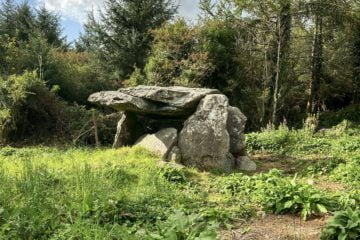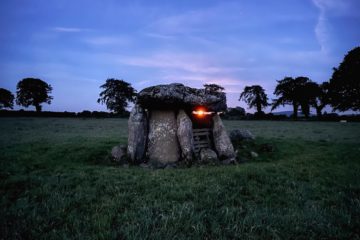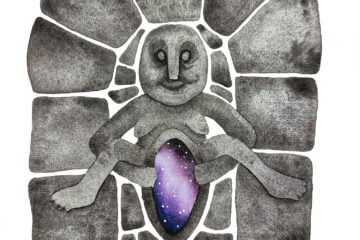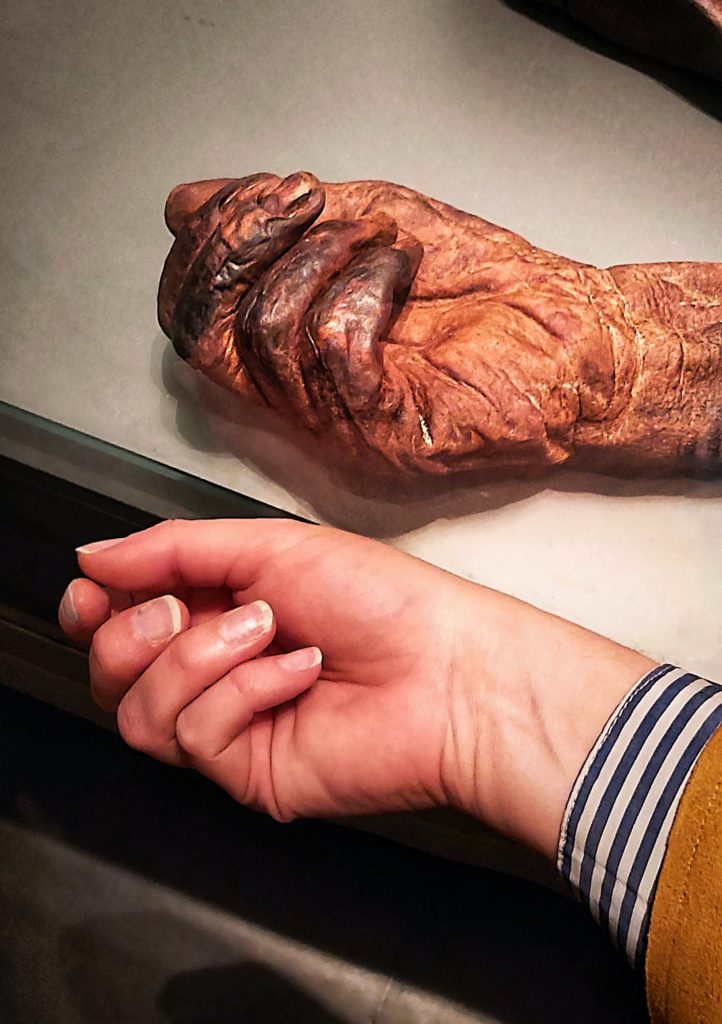
On the 10th of August 2011, Gardaí received a call from the Cúl na Móna bog in Cashel, County Laois. An observant Bord na Móna employee had spotted human remains sticking out of the bog while operating the milling machine, and they looked reasonably well preserved.
Upon arrival, the scene was cordoned off and the Gardaí began investigation into what they thought was a murder. However, after a quick examination, it became apparent that the remains were far older than they had initially appeared.
The National Museum was called, and it was confirmed that the remains were indeed those of someone who had died many thousands of years beforehand. A little too far out of the Statute of Limitations for the Gardaí to investigate!
The remains were taken away, and through radiocarbon dating it was discovered that the Cashel Man is 4000 years old and lived in Ireland during the Early Bronze Age. This makes him the oldest fleshed bog body in Europe. It also makes him almost 700 years older than the Egyptian pharaoh Tutankhamun!
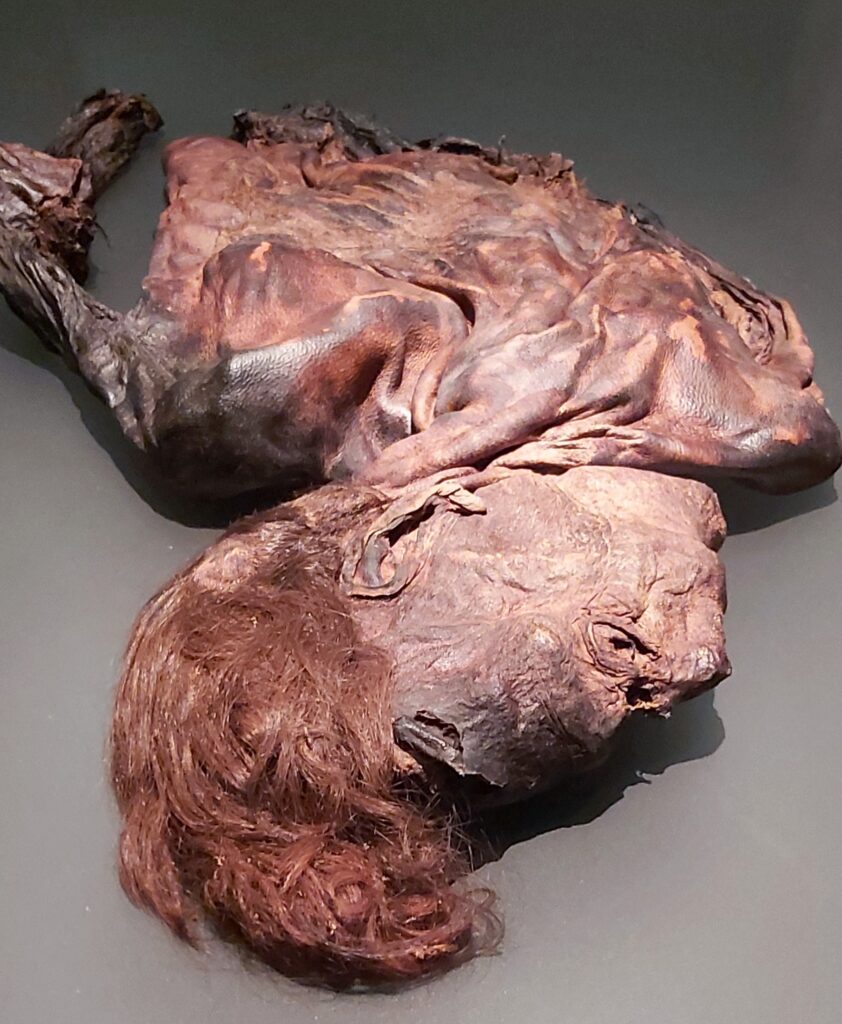
The Sacrifice of Kings
The Cashel man is not the only bog body to have been discovered in Ireland, though he is most certainly the oldest. There are a number of other such bodies that have been found over the years, most dating from the Iron Age some 2500 years ago.
It is thought that the bodies were sacrificed in some kind of ritualistic killing. Prior to the discovery of the Cashel Man it was believed that this was an Iron Age phenomenon, but we now know that this was actually happening as far back as the Bronze Age; two millennia earlier than previously believed.
Most of the bodies found were in good physical condition (aside from injuries related to their death); their fingernails were well groomed, and their hands were free from calluses. This suggests that they were not common people who did manual work for a living.
In fact, it is believed that these men may have once been Kings or Chieftains. Many of the bodies were found close to important hills, boundaries and sites of inauguration. Other objects that have been found in locations such as these include weapons and ceremonial regalia. This would suggest that the deposition of these items, along with the bog bodies, was linked with royalty and ritualistic sacrifice.
Ancient Roman Writings about Celtic Druids tell us that human sacrifice was not uncommon in these societies, and from these bodies we now know that this extended to the sacrifice of Kings. Perhaps they were being scrapped to make way for a new ruler as a result of a calamity such as drought or a famine.
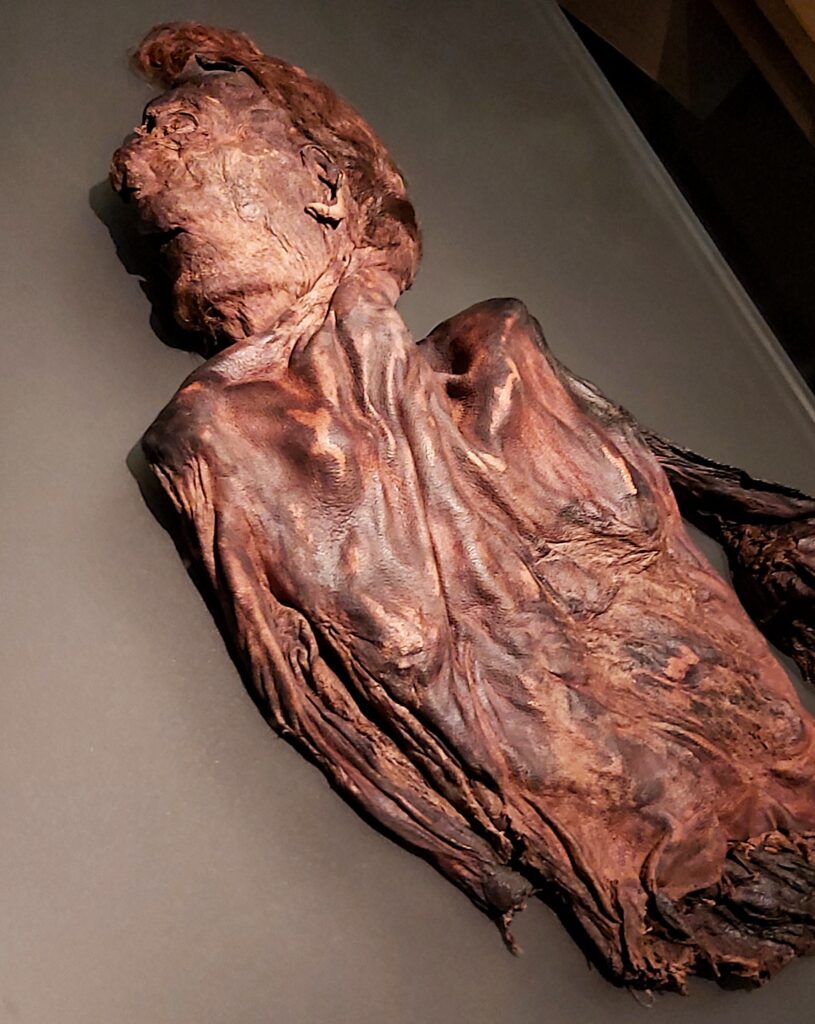
Exhibition at the National Museum of Ireland
The most amazing thing about the bog bodies is that you can actually go to see them face to face at the National Museum of Ireland in Dublin, where they have a fabulous exhibition called ‘Kingship and Sacrifice’.
Standing beside a body that lived on this land thousands of years before you were born is a unique and humbling experience. Looking at faces that smiled in the sunshine during the Iron Age, and hands that once held their loved ones close, really makes you feel connected to a bigger picture. I find it to be absolutely incredible.
The Old Croghan Man has hands that are so well preserved you can see his fingerprints. They are an average and familiar size, with pores and fingernails exactly the same as what you have on your own hands. The Clonycavan Man has a head full of ginger hair, apparently gelled with an Iron Age hair gel.
If you find yourself in Dublin with some time to kill, I couldn’t recommend going to see them strongly enough. It is a beautiful and haunting experience that will stay with you forever and leave you with a newfound respect for, and connection to, our ancient ancestors.
